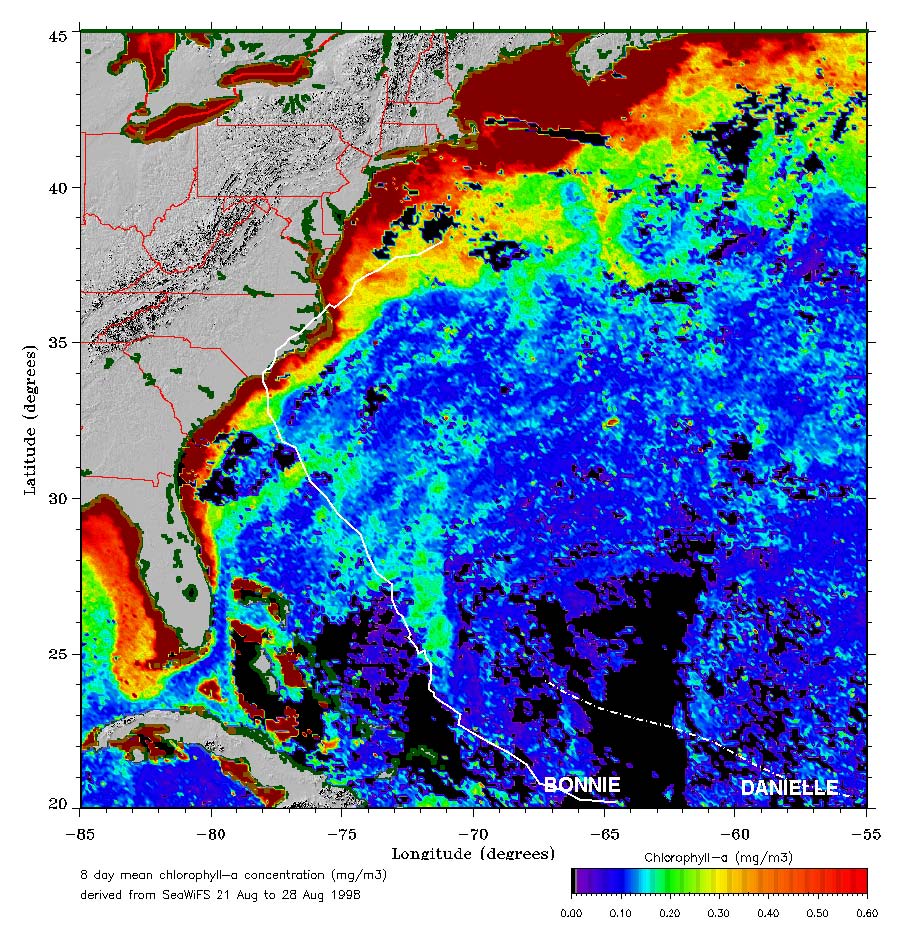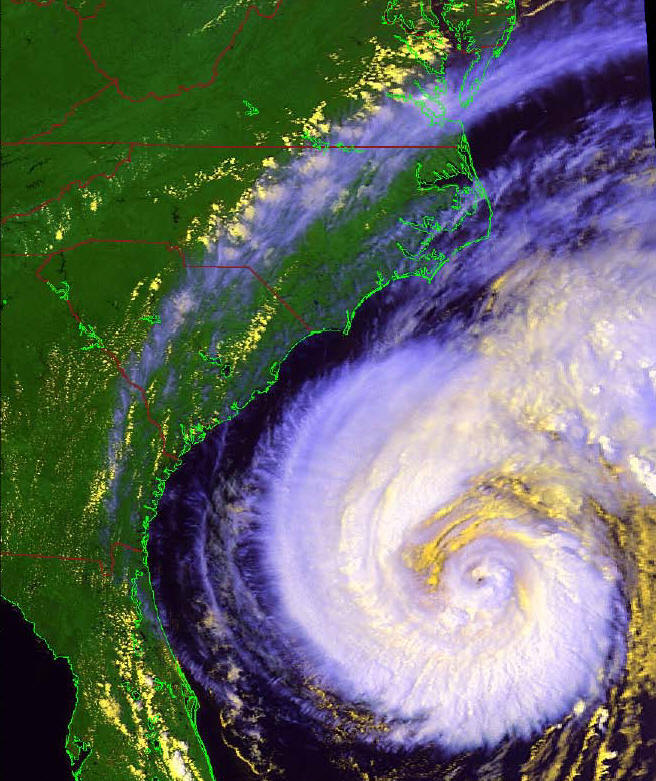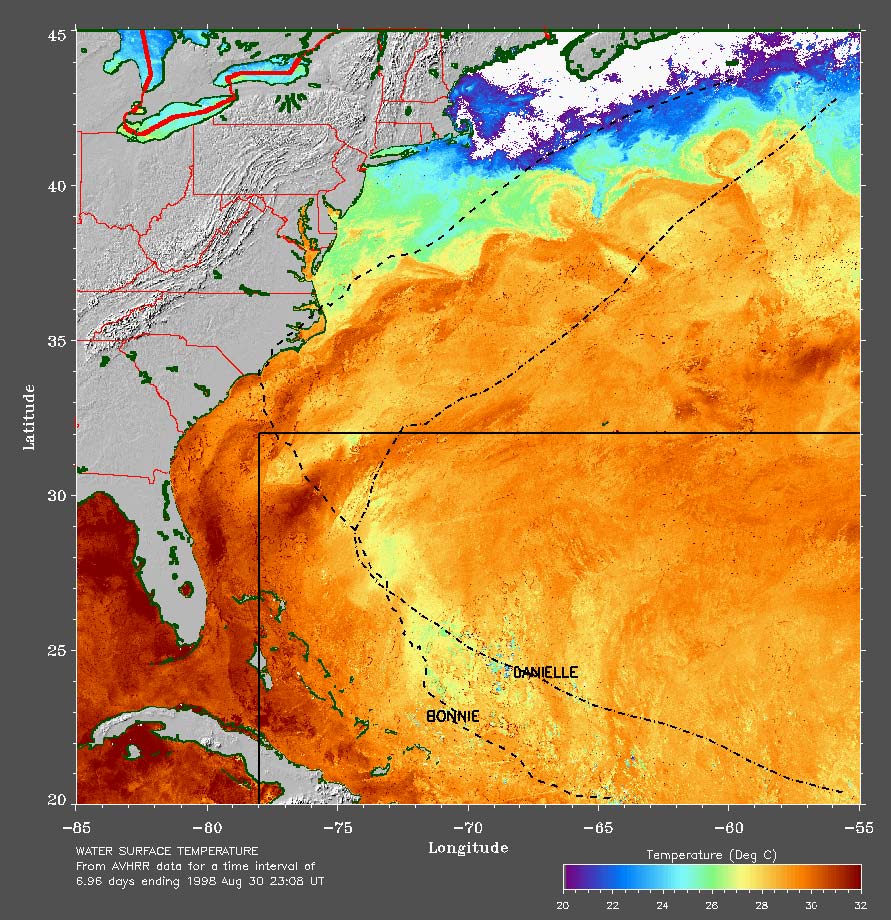
|
REMOTE SENSING: Ocean Color
The concentration of microscopic marine plants,
called phytoplankton can be derived from satellite observations of
ocean color. Phytoplankton account for half of the photosynthesis
occurring on earth. Phytoplankton also play key roles in major
chemical cycles. Because of their ability to draw down carbon from
the atmosphere phytoplankton help the oceans sequester as much as
half of the excess carbon dioxide we introduce into the atmosphere
each year. Despite their importance concentrations of phytoplankton
are extremely variable both in space and time. The impact they have
on the environment varies by species as well. Fortunately it has
become possible to monitor the productivity of the oceans using
remotely sensed observations. This is feasible because chlorophyll
and other plant pigments alter the absorption properties of the
ocean in narrow spectral bands. The NASA Sea-viewing Wide
Field-of-view Sensor (SeaWiFS), launched in 1997 measures upwelling
radiances in eight bands spanning the visible and near-infrared,
while MODIS, launched in 1999 measures 36 bands. The multiple bands
allow scientists to correct for atmospheric effects as well as to
distinguish among phytoplankton species by their reflectivity and
relative pigment concentrations Professors
Busalacchi,
Carton and
Murtugudde are active in research
to use ocean color satellite data for understanding the
physical-biological interactions and bio-climate feedbacks,
quantifying the role of biological pump in marine carbon cycle,
application for climate monitoring and human health, diagnosing the
coupled climate variability, and assimilation of satellite data for
climate variability and prediction.
 Eight day mean chlorophyll-a concentration (mg/m3) derived from SeaWiFS, 21 to 28 August, 1998 |
 NOAA-14 AVHRR 3 channel color composite for August 25 1998, 20:16 UT |
 Water surface temperature from AVHRR for a time interval of about seven days ending 1998 August 30 23:08 UT |
Satellite evidence of
hurricane-induced plankton blooms in the ocean (http://www.atmos.umd.edu/~carton/pdf/babinetal04.pdf)